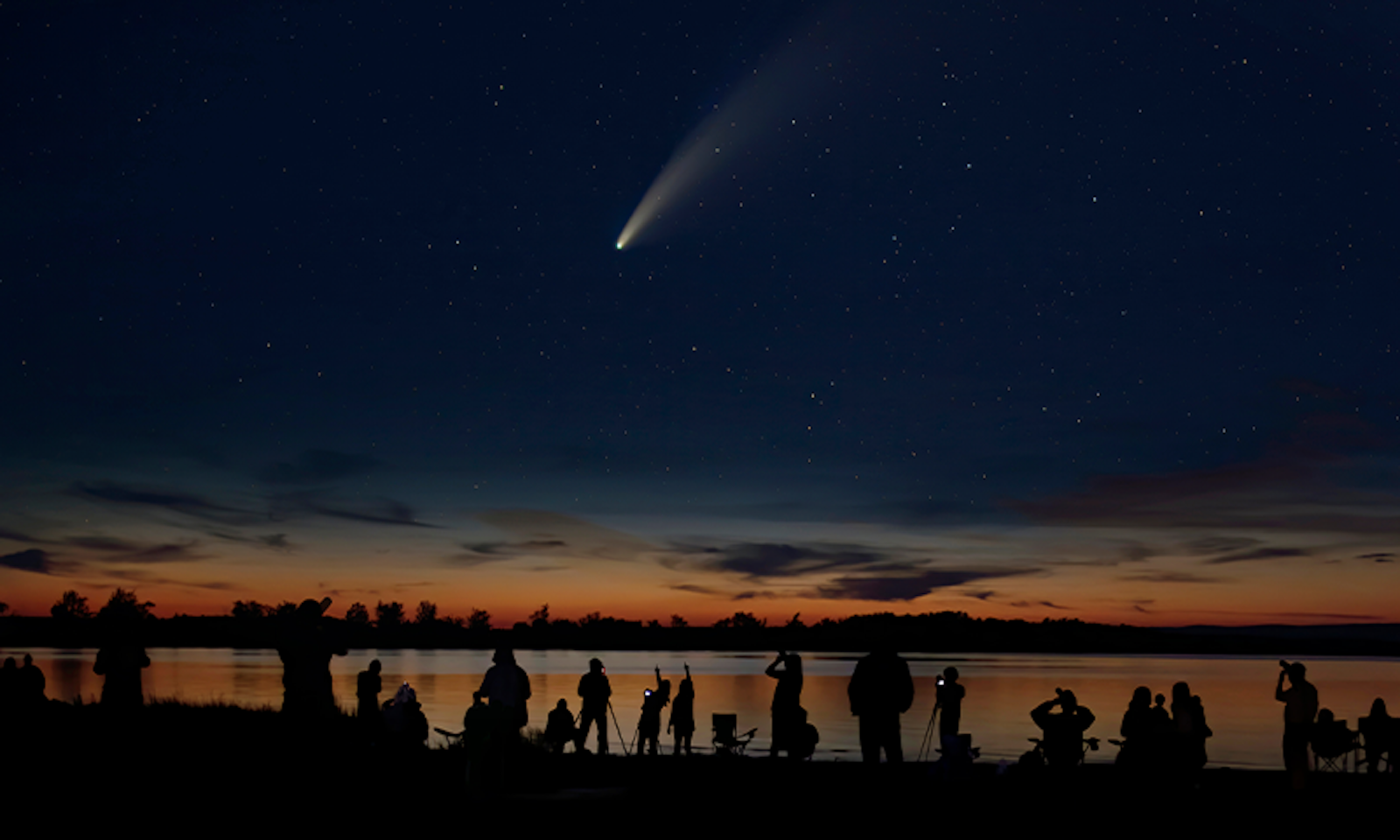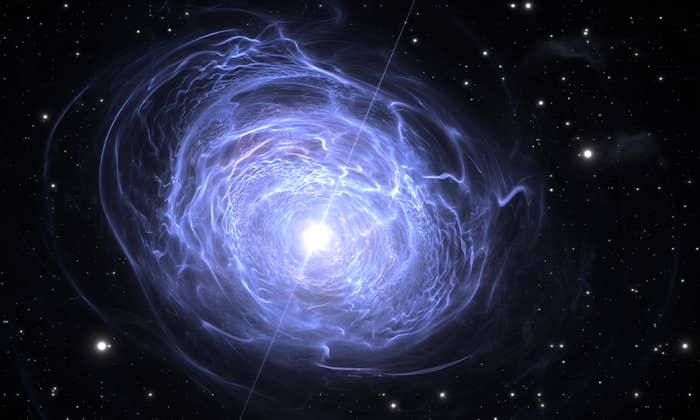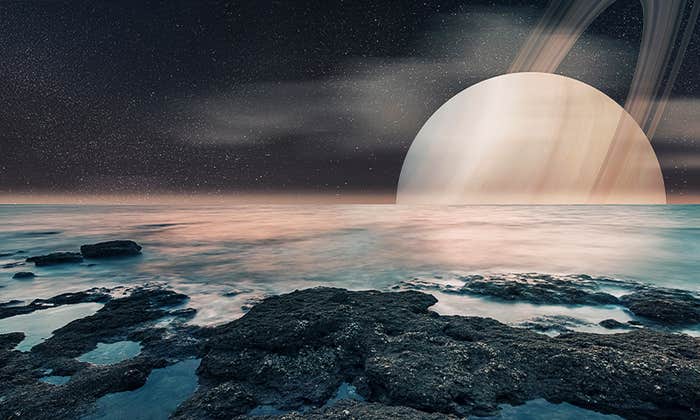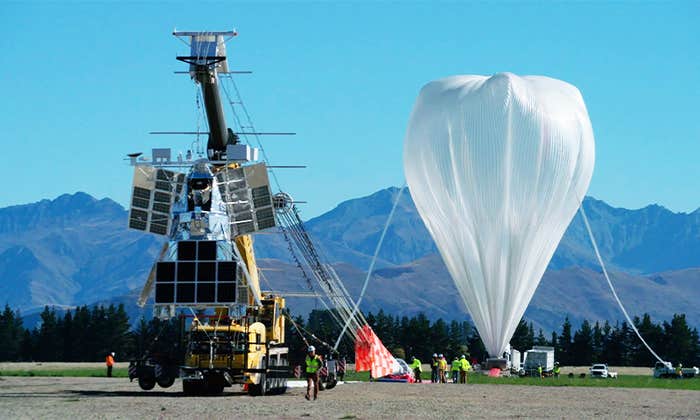The rocks and dust that fall to Earth every day from the cosmos have important stories to tell. But these stories are fragile—easily washed away with a soft rain or lost in the jumble of our own planet’s mêlée. Which is why collecting and keeping the rare grains and rocks in just the right way is so important, says Marc Fries, one of NASA’s astromaterials curators.
Fries oversees NASA’s growing collection of space dust. In his free time, he and his wife, Linda Welzenbach Fries—a former meteorite collection manager for the Smithsonian—hunt for freshly fallen space rocks. Both endeavors serve a quest to best preserve information about what our solar system was like when it was forming, some 4.5 billion years ago, and what the cosmos have rained down on our planet over all of these billions of years that might have changed its story.
These days, Fries and his colleagues are finding not just specks of comets filtering down into our atmosphere, but also tiny bits of what seem to be broken-down human-made spacecraft—data he hasn’t yet published but is submitting for the Lunar and Planetary Science Conference this March.
We recently caught up with Fries, who was pining over a recent meteorite fall in Arizona.
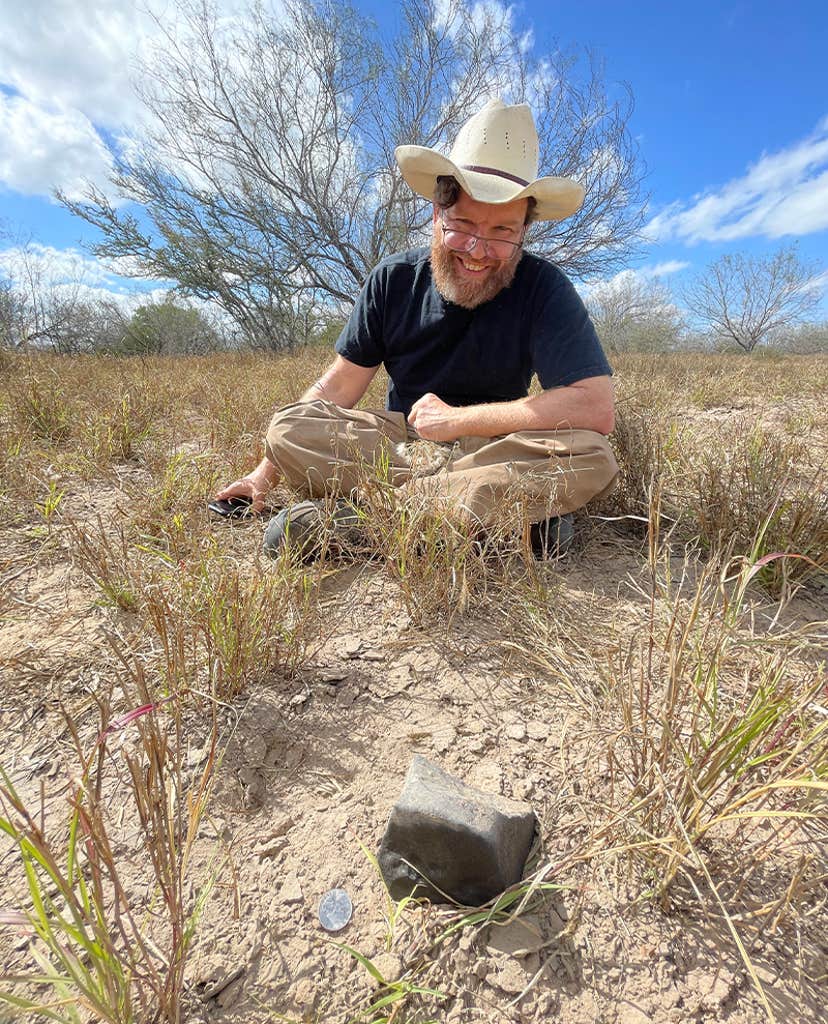
Do you remember the first time you held an object from space in your hands? What was it like?
Yes, I was a Ph.D. in materials science, and a buddy of mine came into the lab where I was working and said, “can you take measurements of this meteorite?” I tried to kick him out of the lab—I thought, “nobody has meteorites, they only live in museums.” But then I figured, he might be right, it might be a meteorite.
When I looked at it, it was like nothing I’d ever seen. I was just awestruck. Here was this thing that was 4.5 billion years old. And it has just been there, in space for the entire time, until now.
I’ve now been to Antarctica a couple of times on the United States Antarctic Meteorite Program. You drive across the ice on snowmobiles looking for meteorites, and once you see one, you’re supposed to stop and wave your arms to tell everybody to come over. I’m always tempted to just sit there for a second. And look at this thing that has been in the cold and darkness for 4.5 billion years and I am the first person to ever lay eyes on it. It is humbling. It’s inspiring. And I never get tired of it.
There is probably one grain of cosmic dust under each footstep you take on Earth.
You usually work with smaller pieces. Is your official NASA title—Cosmic Dust Curator—a title you, in your wildest imagination, ever thought you’d have?
It’s certainly not one my high school counselor ever told me existed! I feel very fortunate.
There are several different collections NASA has of astromaterials, including the lunar rocks brought back by the Apollo astronauts. It also has its meteorite collection, and that’s solid rocks, things you can hold in your hand. Those come predominantly from asteroids, with a little smattering of planets—basically from really tough bodies. But the stuff that strikes the Earth that’s fluffy is cometary material, which doesn’t survive as rocks and, instead comes down as little, fine grains of dust.
The requirements for avoiding contamination are specific to each collection. Some are kept under nitrogen and not allowed to interact with the atmosphere. In the cosmic dust laboratory, we have different levels of particulate contamination requirements—some of those are orders of magnitude cleaner than a clean room.
Finding meteorites seems hard enough—how does collecting space dust work?
The cosmic dust collection has been running since 1981 at Johnson Space Center. We fly high-altitude aircraft—at about 80,000 feet—outfitted with flat-panel collectors coated with a silicone oil, for eight hours at a time, collecting dust. Even when you get into the upper atmosphere, it’s just about one dust particle in every 1,000 cubic meters. Then we determine whether it’s cosmic dust, terrestrial dust—like Saharan Desert dust blown into high altitude—or apparently, we sometimes get bits of spacecraft.
Once the dust particles fall onto Earth’s surface, though, they weather very quickly, getting exposed to more oxygen and water than they’ve ever seen. They just turn into background dust. Which is why we go to such high altitudes to get to it.
So even though they’re small, they don’t burn up in the atmosphere?
Most of them have a little heated rind. There are estimates that there is probably one grain of cosmic dust under each footstep you take on Earth.
What can we learn from the cosmic dust we catch?
Unlike meteorites from asteroids, the cosmic dust that falls to Earth is rich in carbon. They can also have clays, minerals, silicone, silicate glass, tiny sulfides, or little bits of metal.
These same organic compounds have been raining down on Earth since day one, since before the surface even solidified. So it’s been a constant source of organic compounds for the entire planet’s history. One of the major scientific drivers is to understand what these organic compounds have all added up to—and how they might have set the stage for the rise of life through the whole history of the planet and other planets. So we can learn how much organic material also must have fallen on Mars.
This thing has been in the cold and darkness for 4.5 billion years—I am the first person to ever lay eyes on it.
And even though they’re kept under such strict conditions, these grains of cosmic dust in NASA’s collections get loaned out to study?
That’s our main purpose. We get requests from all over the world. But there has to be a good enough reason to loan out the material and warrant exposing it to a potentially harmful lab environment. I did get one request for a performance art exhibition, to mix cosmic dust in paint that would be painted on dancers’ bodies. I had to point out to them that you wouldn’t be able to see it, that it wouldn’t glitter or shimmer—and I think they kind of got the point.
You’re also a hobby space rockhound. I read you and your wife were the first to find fragments of the large meteorite that fell in Southwestern Texas last February. And I found a paper from years ago proposing using doppler weather radar to track meteorite falls—coauthored by you and someone named Jeffrey Fries. Is that a relative?
Yes, that’s my brother! He’s a meteorologist. We were sitting around over beers messing with each other, joking we could each easily do the other’s job and that they were, in fact, superfluous. When we realized that there’s actually no reason why weather radars shouldn’t be able to see meteorite falls.
There’s a website from the American Meteor Society, where people post eyewitness accounts of possible meteorite falls, and you can aggregate enough data on the internet now, from video, radar, seismology, to find them very quickly.
In fact, there was a brand-new meteorite fall in Arizona on December 28. I looked for it on the radar but didn’t see it. Someone using video imagery triangulated where the fireball was, then went to radar and found one pixel that comes and goes for one frame. And they figured out where it was by the next week.
Once one of these possible strikes is posted, does it feel like a race to find it first?
It’s mostly a race against the elements—to get the meteorite before it rains. Because once they get wet, they have been altered.
Most of these rocks have never seen liquid water before. As soon as it gets in there, the metals start to rust, the silicates change. Other minerals, like carbonates and sulfates and things that aren’t natural to the rock get in there. Water starts to erase all the original signatures of the rock—the organic composition, the isotopic composition, the mineralogy. We can get the best science out of the ones that have never seen water.
And, of course, it’s also a race with other people. But it’s more of a competition than a fight among people who are looking. And, generally, everybody’s excited to share data with each other. And when somebody finds it, everybody gets excited about it. Just like the new find in Arizona. I wish I were there now. ![]()
Lead image: Jim Cumming / Shutterstock















